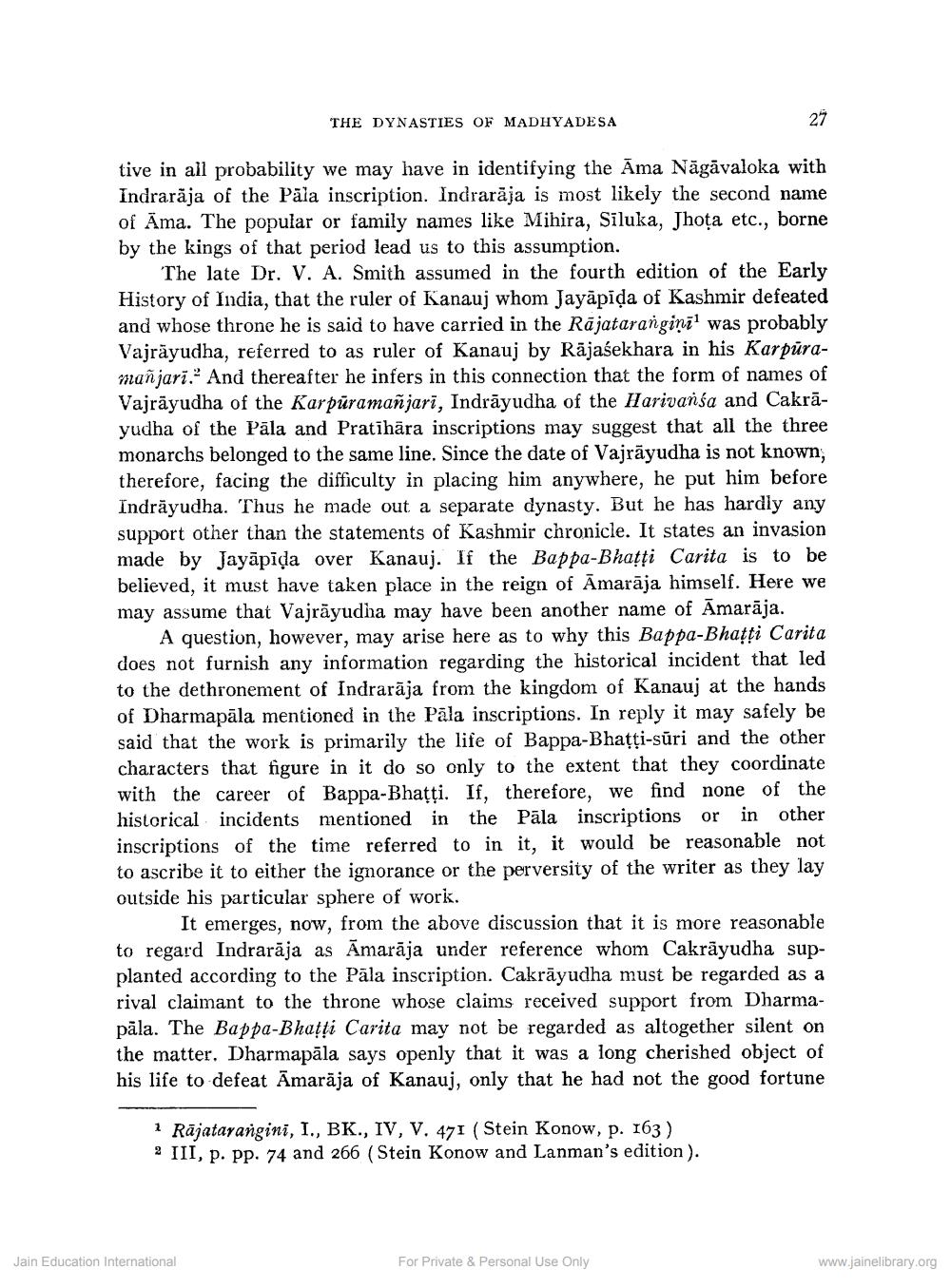________________
THE DYNASTIES OF MADHYADESA
27
tive in all probability we may have in identifying the Ama Nāgāvaloka with Indrarăja of the Pāla inscription. Indrarāja is most likely the second name of Ama. The popular or family names like Mihira, Siluka, Jhoța etc., borne by the kings of that period lead us to this assumption.
The late Dr. V. A. Smith assumed in the fourth edition of the Early History of India, that the ruler of Kanauj whom Jayāpida of Kashmir defeated and whose throne he is said to have carried in the Rājataranginīt was probably Vajräyudha, referred to as ruler of Kanauj by Rājaśekhara in his Karpuramañjari." And thereafter he infers in this connection that the form of names of Vajrāyudha of the Kar püramañjari, Indrāyudha of the Harivansa and Cakrāyudha of the Pāla and Pratihāra inscriptions may suggest that all the three monarchs belonged to the same line. Since the date of Vajrāyudha is not known, therefore, facing the difficulty in placing him anywhere, he put him before Indrāyudha. Thus he made out a separate dynasty. But he has hardly any support other than the statements of Kashmir chronicle. It states an invasion made by Jayāpīda over Kanauj. If the Bappa-Bhatți Carita is to be believed, it must have taken place in the reign of Amarāja himself. Here we may assume that Vajrāyudha may have been another name of Amarāja.
A question, however, may arise here as to why this Bappa-Bhatti Carita does not furnish any information regarding the historical incident that led to the dethronement of Indrarāja from the kingdom of Kanauj at the hands of Dharmapāla mentioned in the Pāla inscriptions. In reply it may safely be said that the work is primarily the life of Bappa-Bhatti-sūri and the other characters that figure in it do so only to the extent that they coordinate with the career of Bappa-Bhatti. If, therefore, we find none of the historical incidents mentioned in the Pāla inscriptions or in other inscriptions of the time referred to in it, it would be reasonable not to ascribe it to either the ignorance or the perversity of the writer as they lay outside his particular sphere of work.
It emerges, now, from the above discussion that it is more reasonable to regard Indrarāja as Āmarāja under reference whom Cakräyudha supplanted according to the Pāla inscription. Cakräyudha must be regarded as a rival claimant to the throne whose claims received support from Dharmapāla. The Bappa-Bhatti Carita may not be regarded as altogether silent on the matter. Dharmapāla says openly that it was a long cherished object of his life to defeat Amarāja of Kanauj, only that he had not the good fortune
1 Rājatarangini, I., BK., IV, V. 471 (Stein Konow, p. 163) 2 III, p. pp. 74 and 266 (Stein Konow and Lanman's edition).
Jain Education International
For Private & Personal Use Only
www.jainelibrary.org




